Carolyn Mary Kleefeld – Contact Us
Please fill out form as completely as possible so we can contact you regarding your request.
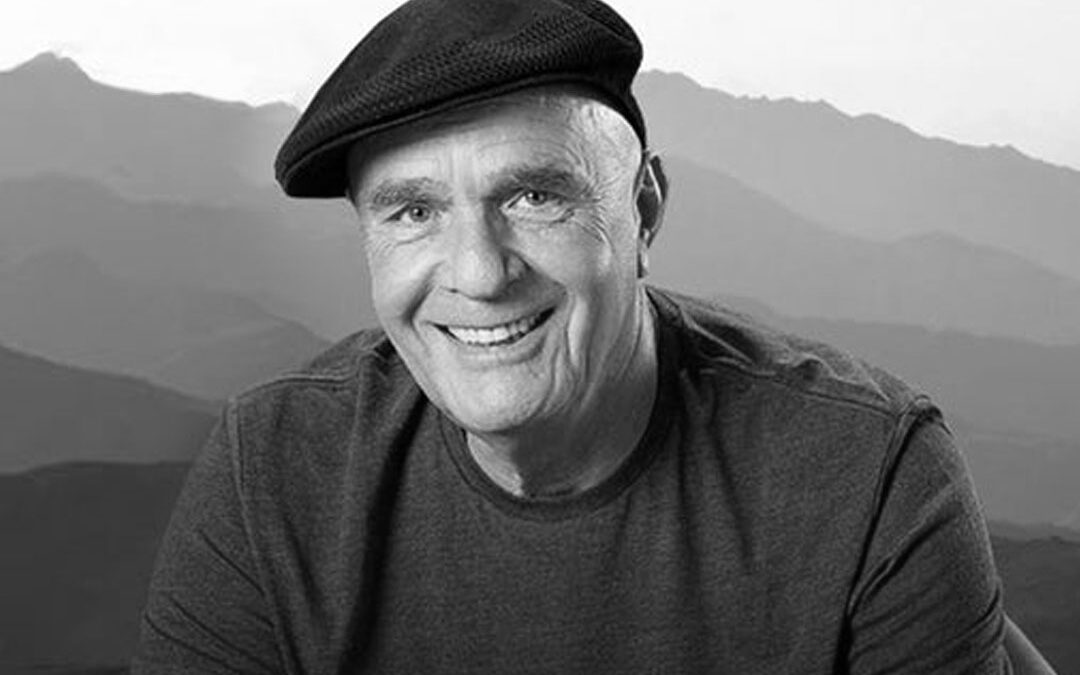
Although I recall seeing a book by the late Wayne Dyer in my mom’s library when I was a teenager, it was Carolyn who first introduced me to his writings years later, during a time of great difficulty in my life. Carolyn says he changed her life and is her foremost muse. I found Dyer’s wise, insightful, and encouraging words to be extremely helpful at the time and he has remained a powerful inspiration.
Dr. Wayne Dyer was an internationally renowned motivational speaker and self-help author, who published more than 40 books in the fields of self-development and spiritual growth, including 21 New York Times bestsellers.
Born in Detroit, Michigan in 1940, Dyer had a difficult childhood. He spent the first ten years of his life in an orphanage, and then in foster homes because his father left the family when he was a child. After graduating from high school, Dyer served 4 years in the U.S. Navy. Then, in 1970, he completed a doctorate in educational counseling at Wayne State University. His dissertation was titled: Group Counseling Leadership Training in Counselor Education.
Early in his career, Dyer worked as a guidance counselor with high school kids in Detroit. He went on to have a successful private therapy practice and then to teach counseling psychology at St. John’s University in New York City as an associate professor. Around this time, a literary agent approached Dyer and encouraged him to write a book about his ideas.
Dyer took his advice, and in 1976 he wrote Your Erroneous Zones. The book offers step-by-step advice on how to break patterns with negative thinking and take greater control of one’s life. Dyer began driving across the country by himself, selling copies of Your Erroneous Zones from the trunk of his car, and this was how he began his career as a self-help author and motivational speaker. The book became the bestselling book of the 1970s, and one of the bestselling books of all time, selling around 100 million copies to date.
Dyer went on to write 20 more bestselling books and he produced a number of television specials for PBS. His books Wisdom of the Ages, Manifest Your Destiny, There’s a Spiritual Solution to Every Problem, The Power of Intention, and others have been featured as National Public Television specials.
Dyer also created many of his own audio and video programs, and he appeared on thousands of television and radio shows, including the Oprah Winfrey Show, The Tonight Show, and virtually every major talk show at the time. Dyer’s feature film, The Shift, was released in 2009, and a film based on his life, My Greatest Teacher, was released in 2012.
Dyer discovered that there was a widespread need for the principles of self-discovery and personal growth, and he sought to bring these ideas to a wider audience. His early work was influenced by psychologists Albert Ellis and Abraham Maslow, and it focused on themes such as self-actualization and motivation. Yoga guru Swami Muktananda influenced his later work and he focused more on spirituality, collaborating with physician Deepak Chopra on a number of projects.
Dyer was also a generous philanthropist, whose charitable contributions included donating a million dollars to his alma mater, Wayne State University, and raising over $150 million for National Public Television through his PBS specials.
Dyer left our world in 2015. According to Dyer’s official website, “His main message was that every person has the potential to live an extraordinary life. What’s more, it’s possible for every person to manifest their deepest desires — if they honor their inner divinity and consciously choose to live from their Highest Self.”
Carolyn has been close with Marcelene, Dyer’s wife and the birth mother of their 7 children. Here’s what she had to say about Carolyn’s book Immortal Seeds: Bearing Gold from the Abyss:
“Carolyn Kleefeld, my beloved heroine, in Immortal Seeds, paints on the page opposite her words of love for David Campagna. These paint her world for me. This love pulses a rapture rare of design and rarer still of existing. Oh, how I long for this to play differently. Yet it is perfection in its telling.”
Some of the quotes that Wayne Dyer is remembered for include:
Change the way you look at things and the things you look at change.
How people treat you is their karma; how you react is yours.
With everything that has happened to you, you can either feel sorry for yourself or treat what has happened as a gift. Everything is either an opportunity to grow or an obstacle to keep you from growing. You get to choose.
I am realistic – I expect miracles.
When the choice is to be right or to be kind, always make the choice that brings peace
Begin to see yourself as a soul with a body rather than a body with a soul.
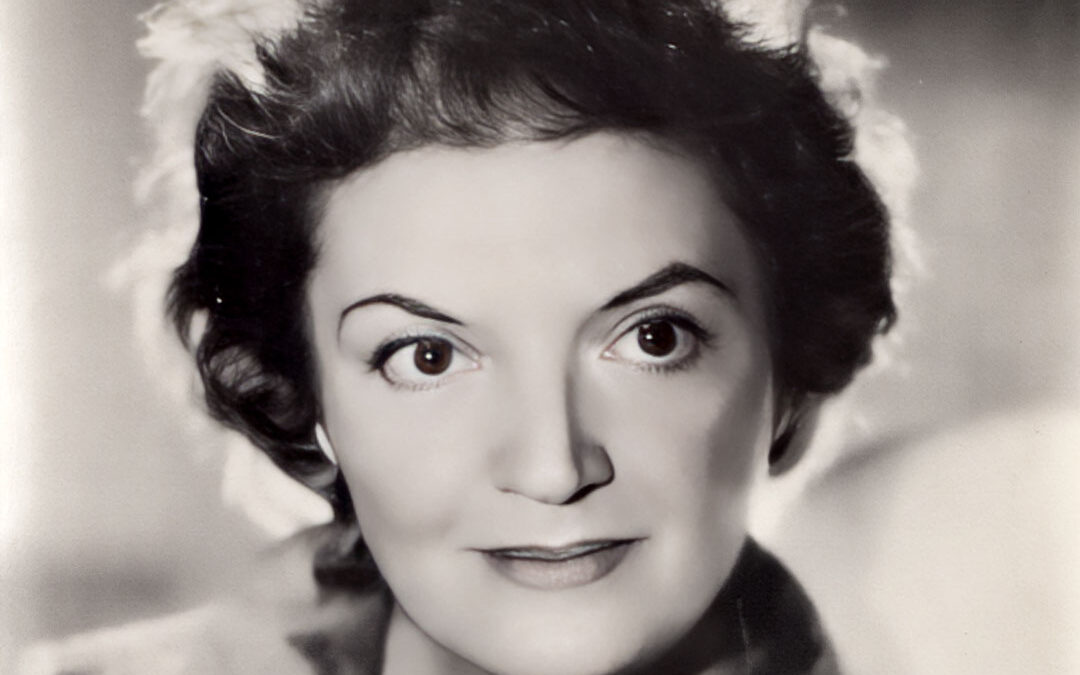
Photo by John Engstead
Carolyn and I met Laura Huxley in the early 1990s through our friend Oz Janiger. Laura was an extremely gifted psychotherapist, a concert violinist, documentary filmmaker, author, and lecturer, as well as a cherished friend and a great inspiration.
Laura Archera Huxley was born in Turin, Italy in 1911. A musical prodigy, Laura began playing the violin at the age of 10 and she had special magic; at the age of 14, she played before the Queen in her native country. Laura performed with her violin all over Europe and left for America before the start of World War II. In 1939, Laura performed a violin concerto by Mozart at Carnegie Hall in New York City, and she played in the Los Angeles Philharmonic Orchestra from 1944 to 1947 as a virtuoso.
Laura settled in Los Angeles. In 1949 she worked on freelance documentary films, and she was hired as an assistant film editor for RKO Radio Pictures in Hollywood. Around this time Laura’s close friend Virginia Pfeiffer became ill, and this had a profound effect on Laura. Laura donated her violin to another violinist, put her music study aside, and began training to become a psychotherapist. Laura pursued a lifelong interest in health, nutrition, psychology, and the advancement of human potential.
Laura first met celebrated British novelist and visionary Aldous Huxley in 1948, when she was pursuing an idea for a film, and although the film was never produced, this was the beginning of their legendary relationship. They were married in 1956. Laura wrote the revered book This Timeless Moment, about her experience with Aldous, who she was married to for the last 7 years of his life.
Laura had a number of mystical and transcendent experiences in her life, and she was outspoken about her beliefs. Between 1963 and 1987, Laura wrote three popular self-help books about getting through life’s difficulties, You Are Not the Target, Between Heaven and Earth, and One-a-Day-Reason to be Happy, as well as a book about conscious conception, The Child of Your Dreams. In 1977, Laura founded Children: Our Ultimate Investment, a nonprofit organization dedicated to “nurturing the possible human.” The organization sponsored a four-day conference in the early 1990s that Carolyn and I attended.
In 1994 Laura participated in the roundtable discussion at UCLA that I co-hosted about the future of technology, along with Carolyn, Timothy Leary, Oz Janiger, John C. Lilly, and Nina Graboi.
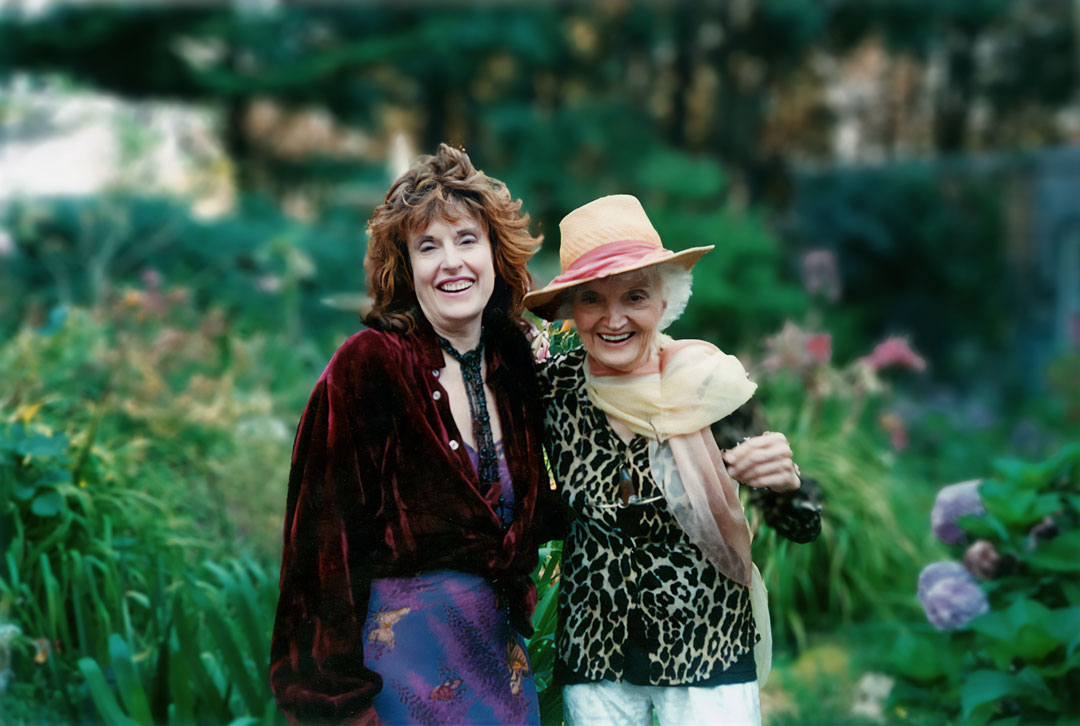
Laura died in 2007 at the age of 96 in her home in the Hollywood Hills, with Valerie Corral, Dr. Paul Fleiss, and Carolyn by her side. Valerie Corral wrote this about her experience with Laura while she was dying:
“She closed her eyes. We sat in that vast silence. Suddenly Laura spoke. ‘Emptiness, emptiness, emptiness. It is emptiness.’ Laura laughed with weakened enthusiasm. With that smile still on her face she looked at me, ‘Tell Ram Dass, it’s all brand new. It Is All Brand New,’ in a soft, rich laugh. She began to speak about the things we all must face, uncertainty, longing, and pain. But there was no remorse or sorrow, only peace, and luminosity. She was stunningly beautiful.”
Carolyn had this to say about her experience with Laura: “I cherish our timeless camaraderie in the last years of her life, and the mischievous comments she loved to sprinkle into the mundane. She was my beloved mentor and friend and is forever in my heart. I have great memories of us walking around the Hollywood sign, and spending numerous evenings with her marvelous friends — the DiCaprios and her daughter Karin Pfeiffer — and of our dancing together, with scarves she would drop down to us from her perch on the stairs above.〞
Laura wrote the introduction to Carolyn’s book The Alchemy of Possibility. Here’s an excerpt:
“Like all nature mystics, Carolyn has a symbiotic relationship with nature. The Alchemy of Possibility might remind us, not through statistics but through poetic prose, that the Golden Rule is to be applied to every tree, every rock, every creature, and everything on the planet. The poem, “is you, is me,” says it all. There is a numinous presence in her identification with nature… In writing freely about her amorous, spiritual, and mundane life, Kleefeld offers… [an] effective intangible therapy for “surfing the waves of existence.” … The Alchemy of Possibility is to be kept nearby and enjoyed slowly…”
I interviewed Laura in 1992 for my book Mavericks of the Mind, which also includes my interview with Carolyn. There was an old-world elegance and mischievous charm about Laura that I adored. Here are some excerpts from our conversation:
David: What do you think happens to human consciousness after death?
Laura: I think and feel that it goes on. I can’t imagine that this extraordinary complex of feeling, thought, and whatever else, just vanishes. I believe that it goes on; but how is a mystery. Perhaps it goes on into vibrations, or into other bodies, or into something totally different and unknown to us.
David: I read the experience that you wrote about at the end of This Timeless Moment, with the medium and the bookcase, that suggested the possibility of contact with Aldous after he had passed on into the afterlife.
Laura: That was extraordinary wasn’t it? I never speak about that because I wrote it with such exactness. I think that if I were to speak about it, I would not remember the moment, the time, and all that exactly. What I have written is absolutely correct.
David: Have you had any other experiences where you felt the presence of Aldous after he had died?
Laura: I went to one or two other mediums who also gave me a very strong presence, but not like that one. That one was…
David: Uncanny.
Laura: That’s right.
David: What’s your personal understanding of God?
Laura: I think, I feel, that there is an immense power; something that is so incredible that we cannot even imagine it— it has so much more imagination than we have. So that when we imagine God, we just imagine as far as we can imagine. But our imagination is very limited when you think of all the flowers and stars. You think of a star, and you think of a cell, and it’s mind-boggling.
David: We can’t even grasp ourselves, let alone a supreme being of cosmic proportions.
Laura: Exactly. How can we grapple with God when we don’t even understand the simplest of things? I don’t even know what goes on when I speak to you, or how you hear, and how you interpret what you hear, and how this influences what I am going to say, etc., etc.
David: If you could sum up the central message that you learned from the time you spent with Aldous, what would you say that was?
Laura: He said it himself. I can do no better than what he said. It was at this important meeting of outstanding scientists in Santa Barbara. Everyone was very serious, and they said, well, Mr. Huxley, what is your final advice after all these years of inquiry? He said, “I’m very embarrassed because I worked for forty years, I studied everything around me, I did experiments, I went to several countries, and all I can tell you is to be just a little kinder to each other.”
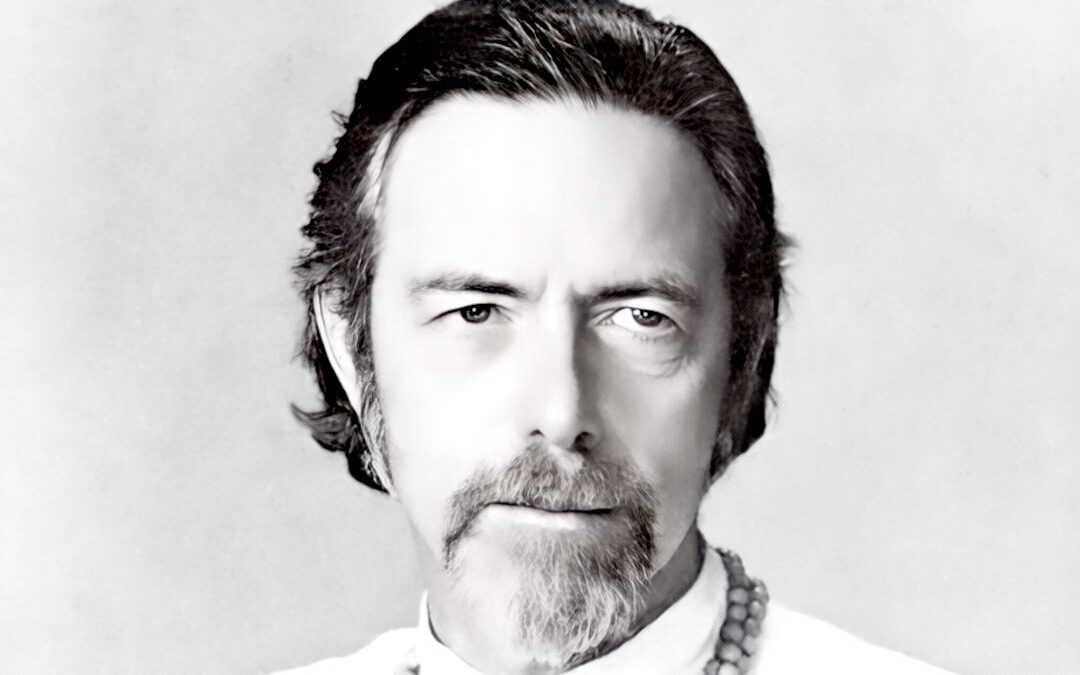
I began reading the work of Alan Watts when I was in high school; his books had a profound impact on me, and the late philosopher came up in a number of conversations that I’ve had with Carolyn over the years.
Born on January 6, 1915 (the same day and year that John Lilly was born) in Chislehurst, England, Watts was a British philosopher, writer, and speaker, who helped to bring Eastern philosophical thought to the West. Watts was a master at interpreting Buddhist, Taoist, and Hindu philosophy, and also at being able to clearly and simply explain it to a Western audience. His prolific writings and eloquent talks have a signature clarity, insight, and logic to them, which helps to make the sometimes seemingly paradoxical concepts of Eastern philosophy more accessible to the Western mind.
As a child, Watts experienced a “mystical dream” while he was ill with a fever, and his mother introduced him to artwork from the Far East; these influences were to affect the development of his life. He began writing original works at the age of 14, and as a teenager, Watts met D. T. Suzuki, the esteemed scholar of Zen Buddhism, which was also an important influence. When Watts was 15 he declared himself a Buddhist, joined the Buddhist Lodge, and became an active member.
In 1936 Watts attended the World Congress of Faiths at the University of London, where he studied the fundamental concepts of Indian and East Asian philosophy. During the 1930s he became particularly interested in Zen Buddhism, which he saw as a synthesis of Taoism, Confucianism, and Buddhism. In 1936 Watts published his first book, The Spirit of Zen, which he wrote when he was 19. Watts was working as a freelance writer by the time the book was published, and he moved to the United States in 1938 for Zen training in New York.
Watts never finished his Zen training— because “the method of his teacher didn’t suit him”— and left before being ordained as a Zen monk. He then entered Seabury-Western Theological Seminary, an Episcopal school in Evanston, Illinois, where he studied Christian scriptures, theology, and church history, attempting to blend Christian and Asian philosophy. His master’s thesis was published as a book, Behold the Spirit: A Study in the Necessity of Mystical Religion, and he was an Episcopal priest in Chicago for six years.
In 1951 Watts moved to San Francisco, where he joined the faculty of the American Academy of Asian Studies, and taught there until 1957. During this period, Watts also began broadcasting a weekly radio program at Pacifica Radio station in Berkeley, where he attracted a following of regular listeners. Throughout his life, the station continued to broadcast many of his recorded lectures, talks, and seminars, and they continue to broadcast them to this day.
In 1957 Watts published The Way of Zen, which became one of his most popular books. The book was unique in that it combined Eastern philosophical thought with Western ideas from general semantics and cybernetics. Watts suggested analogies from cybernetic principles that could be applicable to the Zen tradition. The book sold well and Watts began lecturing more widely.
In 1958 Watts toured parts of Europe with his father and met with the Swiss psychiatrist Carl Jung. During the 1960s Watts became good friends with Harvard psychologists Timothy Leary and Ram Dass, and he spent time at the legendary Millbrook estate in New York during its heyday, from 1963 to 1968. Watts had profound mystical experiences during this time, which are recorded in his book The Joyous Cosmology.
Watts died in 1973 in Mill Valley, California. Although I never got to meet him, Carolyn and I heard a lot of great stories about Alan from our beloved friends Nina Graboi and Oz Janiger; Oz was Alan’s physician and Nina had a close relationship with him.
Watts’ audio library consists of nearly 400 talks, and he wrote more than 25 popular books, including This is It, Cloud Hidden Whereabouts Unknown, Does it Matter?, and The Book on the Taboo Against Knowing Who You Are. An important theme that runs through his work is that humanity’s feeling of isolation and alienation is an illusion because all of creation is an interconnected whole. In his autobiography, In My Own Way, Watts said that the essential message of his life was to “integrate the spiritual with the material,” and he described himself as a “rascal.”
Some of the quotes that Alan Watts is remembered for include:
Trying to define yourself is like trying to bite your own teeth.
Man suffers only because he takes seriously what the gods made for fun.
The meaning of life is just to be alive. It is so plain and so obvious and so simple. And yet, everybody rushes around in a great panic as if it were necessary to achieve something beyond themselves.
The menu is not the meal.
Through our eyes, the universe is perceiving itself. Through our ears, the universe is listening to its harmonies. We are the witnesses through which the universe becomes conscious of its glory, of its magnificence.
Life is like music for its own sake. We are living in an eternal now, and when we listen to music we are not listening to the past, we are not listening to the future, we are listening to an expanded present.
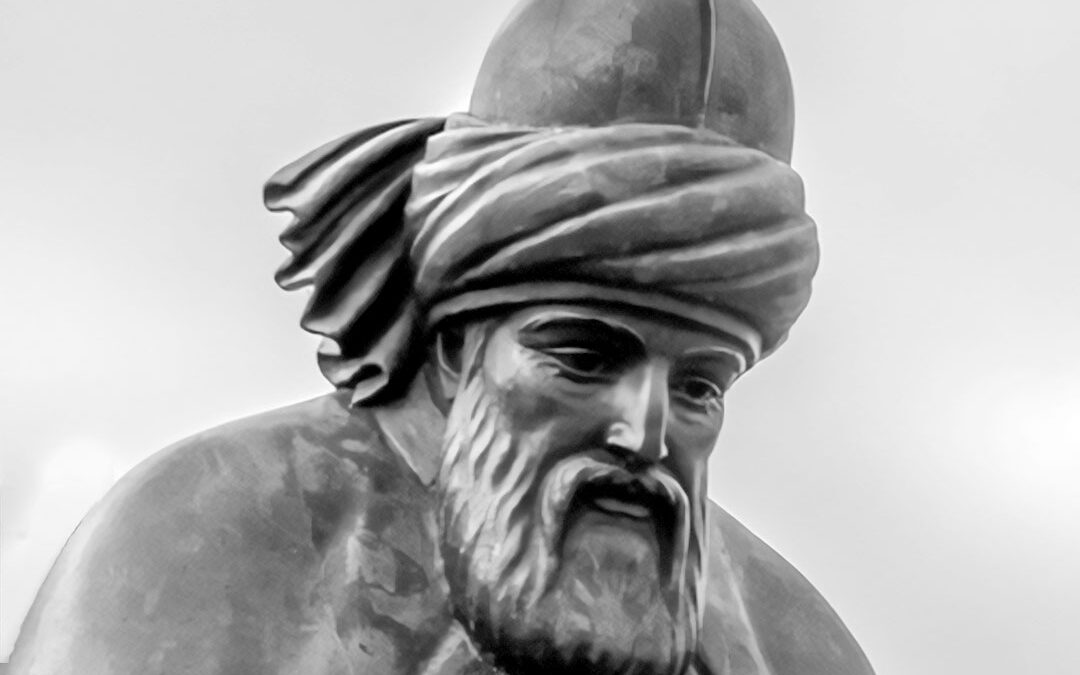
I began reading Rumi’s mystical poetry in the late 1990s when I first encountered a translation of his work by Coleman Barks, and he is someone that both Carolyn and I have been deeply inspired.
Jalāl al-Dīn Muḥammad Rūmī was a 13th Century Sufi mystic and Persian poet, who lived from 1207 to 1273. His poems have been widely translated into many languages, and he is one of the most popular and bestselling poets in the U.S.
Rumi was born to Persian-speaking parents, originally from the Balkh, which is now in Afghanistan. Rumi’s birthplace isn’t known for certain; scholars think that he was either born in Wakhsh, a village on the Vakhsh River in present-day Tajikistan or in the city of Balkh, which is in present-day Afghanistan. Rumi’s father was an eccentric Muslim teacher— a theologian, jurist, and mystic— who had a great influence on his son’s development.
When he was five years old, a young Rumi reportedly saw angels. Scholars have to tease apart legend from historical fact about Rumi’s past, but it is known that at the age of twenty-five, Rumi inherited the position of an Islamic teacher, when his father, the previous holder of the position, died.
For nine years, Rumi practiced Sufism as a disciple of Burhan ud-Din, and he became an Islamic Jurist, issuing legal rulings and giving sermons in the mosques of Konya. (Sufism is a branch of Islam that sees the religious practice as a means to oneness with God, and Sufis have traditionally infused their devotion with poetry and music.)
Rumi was known for his personal charm, as well as his great religious knowledge, and he brought musical instruments into prayer and practiced a whirling dance, that he believed helped the human soul to connect with the divine.
In 1244 Rumi met a member of the Sufi religious order named Shams-e Tabrizi (who had taken vows of poverty and austerity) that completely changed his life, and he became an ascetic.
Then, one fateful night in 1248, as Rumi and Shams were talking, Shams answered a mysterious knock at the back door. Shams went out the door and was never seen again. It was thought that he was murdered, and Rumi’s love for, and his bereavement over the death of Shams was expressed in a creative outpouring of lyric poems, known as the Divan-e Shams-e Tabrizi, and this is when Rumi began to seriously write poetry.
Rumi went on to write over 3,000 lyrical, rhymed poems called “ghazals,” and over 2,000 four-line rhyming poems called “robaiyat,” which often deal with themes of love and mystical union with God. Although his works were written mostly in Persian, he sometimes also wrote in Greek, Turkish, and Arabic.
In December 1273, Rumi fell ill, predicted his own death, and composed one final poem. He gave his followers special instructions to treat the night of his death like they would “a joyous wedding night,” and he planned his own funeral, with singers, musicians, and dancers. Rumi’s body was entombed beside that of his father, and a shrine was erected over his place of burial.
Rumi’s epitaph reads:
“When we are dead, seek not our tomb in the earth, but find it in the hearts of men.”
Rumi’s work lives on and many people know his quotes from memes commonly passed around Facebook and Instagram, as his spiritual wisdom transcends culture, religion, and time. Some of the quotes that Rumi is remembered for include:
You are not a drop in the ocean. You are the entire ocean, in a drop.
Raise your words, not voice. It is rain that grows flowers, not thunder.
This place is a dream. Only a sleeper considers it real. Then death comes like dawn, and you wake up laughing at what you thought was your grief.
As you start to walk on the way, the way appears.
What hurts you, blesses you. Darkness is your candle.
There’s a field somewhere beyond all doubt and wrongdoing. I’ll meet you there.

Carolyn and I met John Lilly in the late 1980s, and we become good friends over the years. He was an extraordinary human being and a gifted genius.
John C. Lilly, M.D. was a brilliant visionary researcher and maverick thinker, whose interdisciplinary work helped to revolutionize numerous scientific fields. He was a physician, neuroscientist, psychoanalyst, mind explorer, philosopher, writer, and inventor, who lived from 1915 to 2001 and made significant contributions to the fields of neurophysiology, biophysics, electronics, computer science, and neuroanatomy.
John pioneered radical new frontiers in psychology and neuroscience, and he charted his brave explorations of the human mind. However, John is perhaps best known as the man behind the fictional scientists dramatized in the Hollywood films Altered States and The Day of the Dolphin.
John was educated at CalTech, Dartmouth Medical School, and the University of Pennsylvania, and he did a large part of his scientific research at the National Institute of Mental Health during the 1950s. John pioneered early neuroscience research in electrical brain stimulation, mapping out the pleasure and pain pathways in the brain. He was the first person to conduct scientific studies attempting to communicate with dolphins and whales, which he recognized as having high intelligence, and he built his own dolphin-communication research lab in St. Thomas in the Virgin Islands. John also invented the isolation or flotation tank and did significant research in the area of sensory deprivation.
When I lived in LA during the early 1990s, I used to hang out regularly at John’s estate in Malibu, and after he moved to Hawaii, I spent a glorious month at his place in Maui. I loved John. I miss John’s brilliant mind, his clever jokes, and his unique perspective so much. John was eccentrically lovable, often unpredictable, and he had a great sense of humor. I interviewed John in 1991 for my book Mavericks of the Mind,” which also contains my interview with Carolyn. John was 76 at the time and I was 30.
Here are some excerpts from our conversation:
David: How did your work with the dolphins influence your experience in the isolation tank?
John: I discovered that dolphins have personalities and are valuable people. I began to wonder about whales, which have much larger brains, and I wondered what their capabilities are. There’s a threshold of brain size for language as we know it, and as far as I can make out it’s about 800 grams.
Anybody below that, like the chimpanzee or the gorilla can’t learn to speak a language. But above that language is acquired very rapidly, as in a baby. Well, this means that the dolphin’s life is probably as complicated as ours, but what about their spiritual life? Can they get out of their bodies and travel? Are they extraterrestrials? I asked those kinds of questions. Most people wouldn’t ask them. . . .
. . .when I started going out on the universe. . . in the tank, I’d come to a certain group of entities and I’d say, “Are you God?” And they’d say, “Well, we say that to some people but God is way up there somewhere with the angels.” And it turned out no matter how big they were, God is bigger. So finally I got to the Starmaker. But as Olaf Stapledon says in his book, it’s impossible to describe the Starmaker in human terms. . . .
I call God ECCO now. The Earth Coincidence Control Office. It’s much more satisfying to call it that. A lot of people accept this and they don’t know that they’re just talking about God. I finally found a God that was big enough. As the astronomer said to the Minister, “My God’s astronomical.” The Minister said, “How can you relate to something so big?” The astronomer said, “Well, that isn’t the problem, your God’s too small!”
[Note: Bottlenose dolphins have larger brains than humans— 1600 grams versus 1300 grams— and they have a brain-to-body-weight ratio that is greater than the great apes do (but lower than humans).]
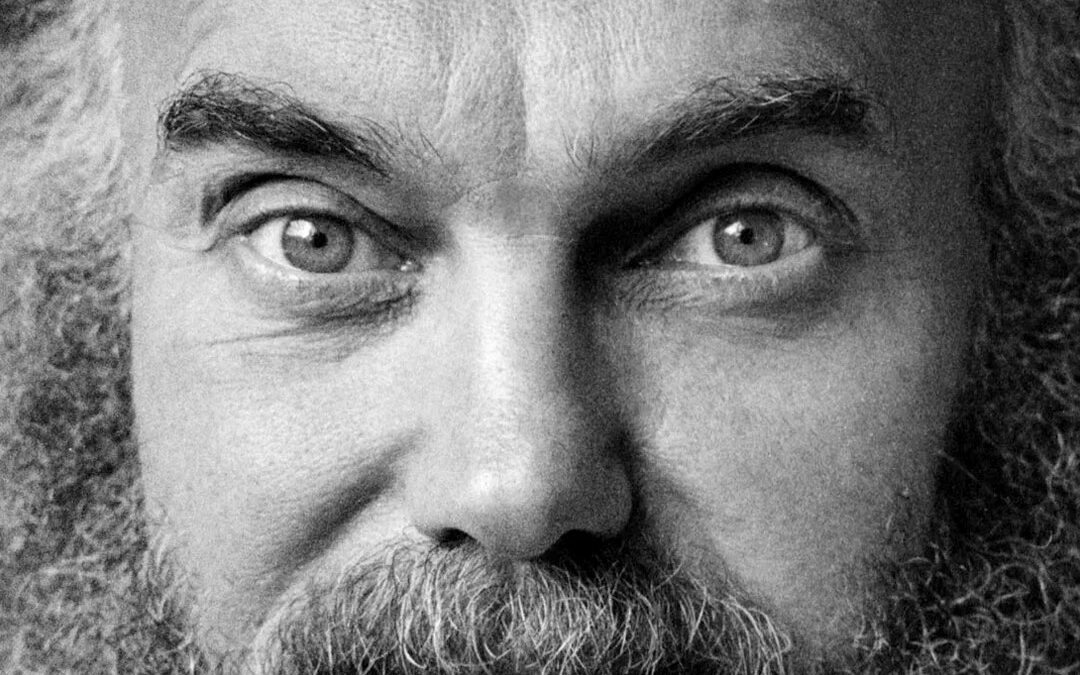
Ram Dass was one of the most respected and beloved spiritual teachers in the world. His books and lectures have been responsible for exposing many Westerners to Eastern philosophy, and he has been an inspiration to many people, including Carolyn and me. Ram Dass is the author of seventeen books about topics such as personal transformation and compassionate social action— including the classic book of illustrated Hindu revelations, Be Here Now, which was one of the most important books in my, as well as many others, developmental process.
Born Richard Alpert in 1931, Alpert was a psychology professor at Harvard in the early 1960s, who along with Timothy Leary, researched and experimented with controversial methods of consciousness expansion that caused quite a stir at that prestigious university, resulting in them being formally dismissed from the faculty in 1963. Leary and Alpert moved to the legendary Millbrook estate in upstate New York, where they continued their research, and historical advances were made into how to access new states of consciousness, but once again their controversial research methods stirred up added controversy.
Alpert left Millbrook in 1967 and traveled to India, where he met his spiritual guru— Neem Karoli Baba— who gave him the name Ram Dass, which means “servant of God.” Under his guru’s guidance, he began to study yoga and meditation, and this profoundly affected his life. Ram Dass created the Hanuman Foundation in 1974 to spread “spiritually-directed social action” in the West, and in 1978 Ram Dass co-founded the Seva Foundation , an international service organization dedicated to relieving suffering in the world.
Ram Dass had a stroke in 1997, which paralyzed the right side of his body. Despite the difficulty that he had speaking and walking, Ram Dass continued to teach, write and lecture for another twenty-two years. Ram Dass left this world in 2019.
It was such a great joy to have been friends with Ram Dass, and to have spent time hanging out with him over the years. He had a big influence on the development of my spiritual perspective; I carried his book “Be Here Now” around with me everywhere that I went when I was in High School, and, to this day, I still turn to it for inspiration. Ram Dass was a funny, lovable guy, and he has a lot of charisma, but I think that it was his profound honesty, and openness about his own spiritual evolution, that made his teachings so powerful. He had such a beautiful heart and spirit, and once sat on the phone with me for hours, while I sobbed over a lost relationship.
Here’s a story that stands out in my mind. One evening Ram Dass came to Santa Cruz to pick up his medical cannabis from a WAMM meeting that I was also attending. This was after his stroke, so he would speak slowly, in brief utterances, but still gave a talk to the WAMM members about death and dying. After the talk he took some questions, and I asked him, “Ram Dass, how can you speak with such certainty about life after death?”
There was a pause. Ram Dass thought for a moment and then said, “Well, first there was the mushrooms. Then, my guru, and my reading the works of great spiritual masters.” When he finished I said, “But Ram Dass, I’ve had mystical experiences as well. I’ve also had great teachers and read many books too, but I can’t speak with any certainty about what happens after we die…” Ram Dass interrupted me and added, “And chutzpah!”
When Carolyn first met Ram Dass they had an immediate acknowledgment. Ram Dass gazed into Carolyn’s face and said, “I know you,” and she felt the same recognition of knowing him since ancient times. Also, Carolyn met Ram Dass on several other occasions. Her last memory was of him calling Laura Huxley during the last week of her life, when she answered the phone. Ram Dass told Laura, “Everything is brand new,” which she repeated until she departed.
I interviewed Ram Dass on three occasions. Here is an excerpt from one of my interviews with him.
David: What is your concept of God?
Ram Dass: I think it’s a word like a finger pointing to the moon. I don’t think that what it points to is describable. It is pointing to that which is beyond form that manifests through form. A God defined is a God confined. I can give you thousands of poetic little descriptions. It’s all, everything and nothing. It’s all the things that the Heart Sutra talks about. It’s God at play with itself. God is the One, but the fact is that the concept of the One comes from two, and when you’re in the One, there’s no One. It’s zero, which equals one at that point.
David: What do you think happens to consciousness after death?
Ram Dass: I think it jumps into a body of some kind, on some plane of existence, and it goes on doing that until it is with God. From a Hindu point of view, consciousness keeps going through reincarnations, which are learning experiences for the soul. I think what happens after you die is a function of the level of evolution of the individual. I think that if you have finished your work and you’re just awareness that happens to be in a body, when the body ends it’s like selling your Ford— it’s no big deal.